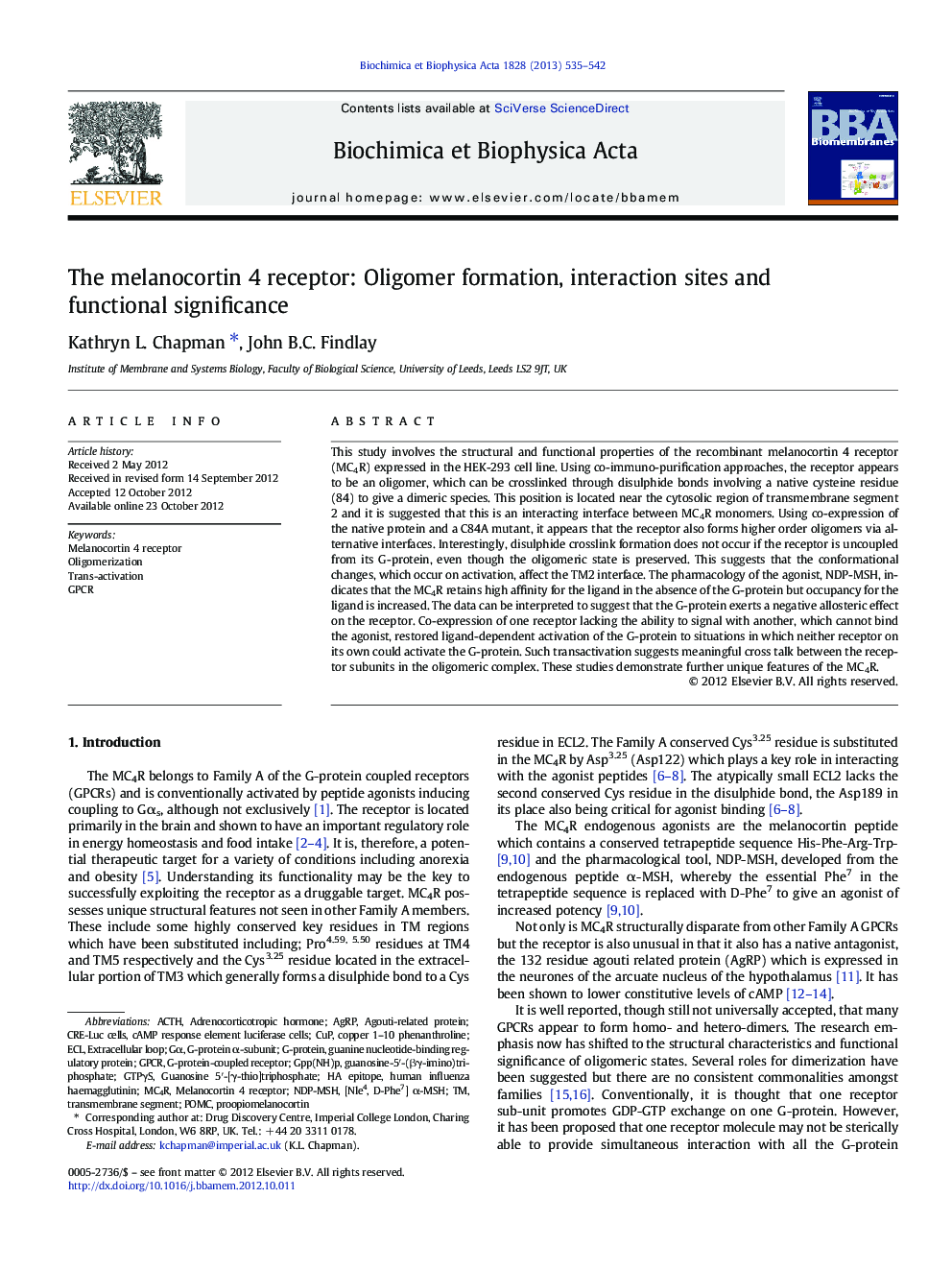| Article ID | Journal | Published Year | Pages | File Type |
|---|---|---|---|---|
| 1944390 | Biochimica et Biophysica Acta (BBA) - Biomembranes | 2013 | 8 Pages |
This study involves the structural and functional properties of the recombinant melanocortin 4 receptor (MC4R) expressed in the HEK-293 cell line. Using co-immuno-purification approaches, the receptor appears to be an oligomer, which can be crosslinked through disulphide bonds involving a native cysteine residue (84) to give a dimeric species. This position is located near the cytosolic region of transmembrane segment 2 and it is suggested that this is an interacting interface between MC4R monomers. Using co-expression of the native protein and a C84A mutant, it appears that the receptor also forms higher order oligomers via alternative interfaces. Interestingly, disulphide crosslink formation does not occur if the receptor is uncoupled from its G-protein, even though the oligomeric state is preserved. This suggests that the conformational changes, which occur on activation, affect the TM2 interface. The pharmacology of the agonist, NDP-MSH, indicates that the MC4R retains high affinity for the ligand in the absence of the G-protein but occupancy for the ligand is increased. The data can be interpreted to suggest that the G-protein exerts a negative allosteric effect on the receptor. Co-expression of one receptor lacking the ability to signal with another, which cannot bind the agonist, restored ligand-dependent activation of the G-protein to situations in which neither receptor on its own could activate the G-protein. Such transactivation suggests meaningful cross talk between the receptor subunits in the oligomeric complex. These studies demonstrate further unique features of the MC4R.
Graphical abstractFigure optionsDownload full-size imageDownload high-quality image (121 K)Download as PowerPoint slideHighlights► The MC4R is an oligomer. ► C84 located on TMII can crosslink between dimers when coupled to the G-protein. ► The MC4R retains high affinity for the agonist in the absence of the G-protein. ► Agonist occupancy increases in the absence of G-protein. ► Transactivation studies on the MC4R demonstrated crosstalk in the oligomer.
